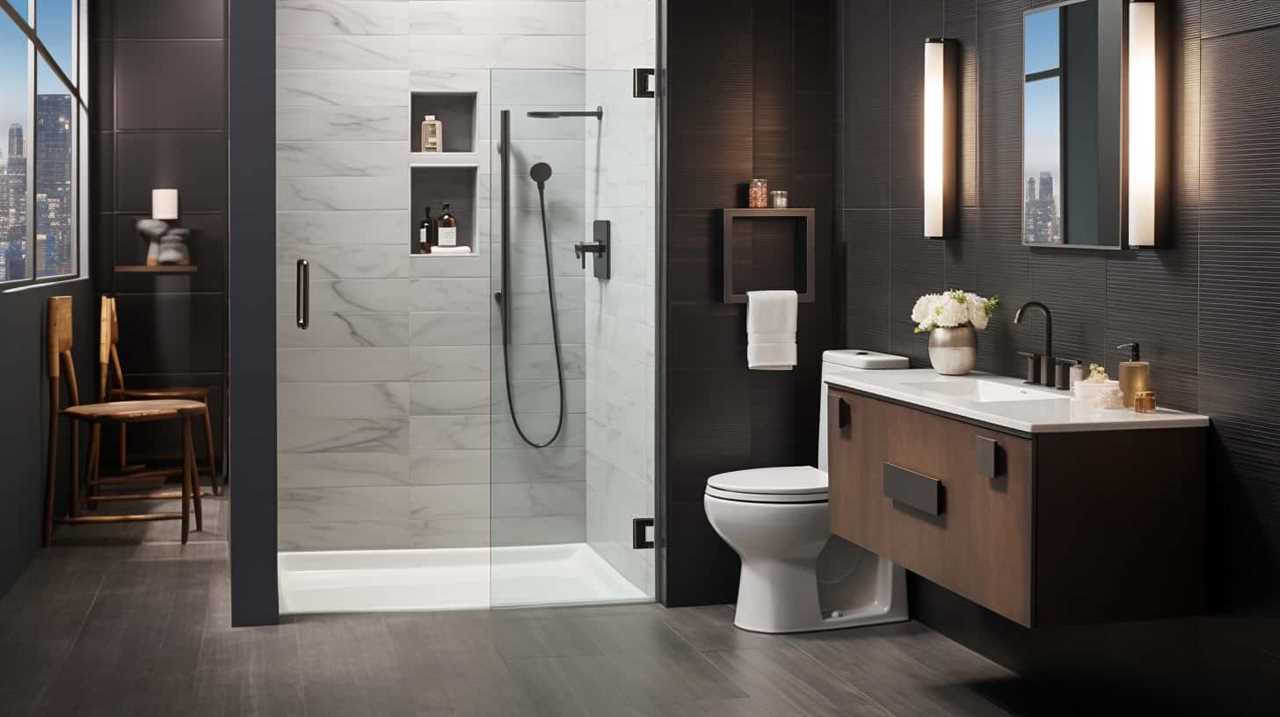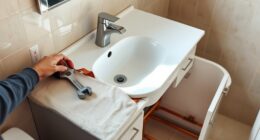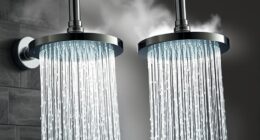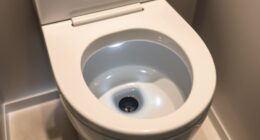Picture yourself enjoying a soothing bath, wishing it could kickstart the beginning of labor. Our interest in whether or not a bath can induce labor prompted us to delve into the science behind this widely held belief.
In this article, we will delve into the historical beliefs, scientific studies, and practical tips surrounding the topic. So, if you’re expecting and wondering about the connection between baths and labor, sit back, relax, and let us guide you through the truth behind this myth.
Key Takeaways
- There is no scientific evidence to support the claim that bathing can induce labor.
- Traditional beliefs and cultural practices have influenced the idea of using baths to encourage labor.
- Immersion in warm water during labor has been shown to reduce pain and the need for analgesia.
- Following practical tips for safe bathing during pregnancy can help ensure a safe and enjoyable bath experience.
The Myth of Bath-Induced Labor
Is there any truth to the myth that taking a bath can induce labor?
Many women have heard about the idea that soaking in a warm bath can jumpstart contractions and help bring on labor. However, it’s important to understand that this is just a myth.
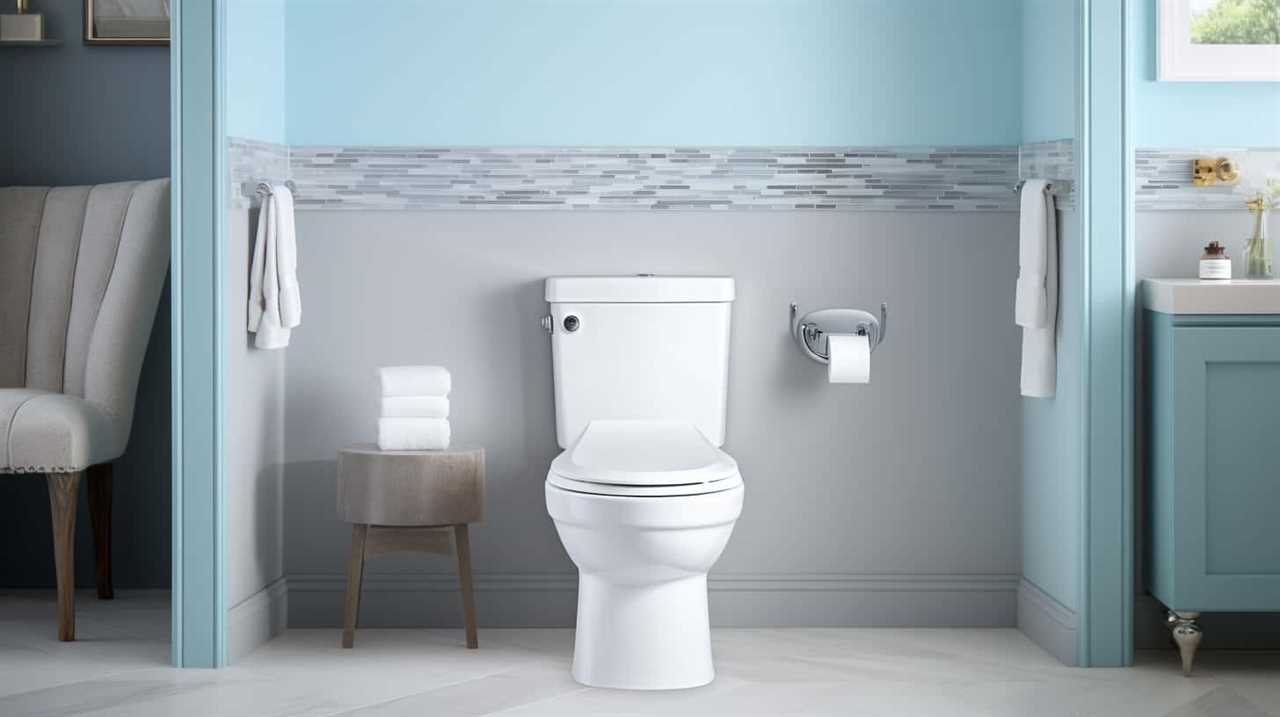
There’s no scientific evidence to support the claim that bathing can induce labor. While a warm bath can provide relaxation and comfort during pregnancy, it isn’t a reliable method for initiating labor.
It’s crucial for expectant mothers to be aware of the various bathing myths circulating and to focus on alternative labor induction methods that are supported by medical professionals, such as exercise, nipple stimulation, or medical interventions as recommended by their healthcare provider.
Historical Beliefs and Cultural Practices
How have historical beliefs and cultural practices influenced the idea of using baths to induce labor? Throughout history, various cultures have held strong beliefs about the power of water in childbirth. Traditional birthing methods often incorporated water as a means to ease labor pains and promote a smoother delivery. These historical traditions have shaped the modern concept of using baths to induce labor. In many cultures, water was seen as a symbol of cleansing, purification, and rebirth. The act of immersing oneself in a bath was believed to not only relax the body, but also to spiritually prepare the mother for the birthing process. This belief in the transformative nature of water has persisted over time, leading to the continued use of baths as a method to encourage labor.
| Historical Beliefs | Cultural Practices |
|---|---|
| Water symbolizes cleansing and rebirth | Incorporating water in traditional birthing methods |
| Baths believed to relax and spiritually prepare the mother | Strong belief in the power of water in childbirth |
Understanding the Mechanics of Labor
One key aspect of understanding the mechanics of labor is recognizing the role of contractions. These powerful muscular movements of the uterus play a crucial role in the progression of labor. Here are four important factors to consider when understanding contractions in labor:

- Intensity: Contractions start mild and gradually increase in intensity, reaching their peak during active labor. This helps to efface and dilate the cervix.
- Duration: Contractions typically last around 60 seconds, with a rest period of around 3-5 minutes between contractions. This allows for oxygen and nutrients to reach the baby.
- Frequency: As labor progresses, contractions become more frequent, occurring every 2-3 minutes during active labor. This helps to propel the baby down the birth canal.
- Maternal positions: Certain positions, such as upright or on hands and knees, can enhance the effectiveness of contractions and facilitate the descent of the baby.
Understanding these mechanics of contractions and their relationship with maternal positions and labor hormones can empower expectant parents to navigate the birthing process with confidence and understanding.
Scientific Studies and Research Findings
We have explored the mechanics of contractions in labor, and now let’s delve into the scientific studies and research findings surrounding the potential of a bath to bring on labor. Several studies have investigated the effect of hydrotherapy on inducing labor, with promising results. One study published in the Journal of Obstetric, Gynecologic, and Neonatal Nursing found that immersion in warm water during labor significantly reduced pain and the need for analgesia. Another study published in the Journal of Perinatal & Neonatal Nursing reported that hydrotherapy decreased the duration of the first stage of labor. These findings suggest that the benefits of hydrotherapy may be attributed to the relaxation it provides, which can stimulate the release of pregnancy hormones and promote efficient contractions. The table below summarizes the key findings from these studies:
| Study | Findings |
|---|---|
| Journal of Obstetric, Gynecologic, and Neonatal Nursing | Immersion in warm water during labor reduces pain and the need for analgesia. |
| Journal of Perinatal & Neonatal Nursing | Hydrotherapy decreases the duration of the first stage of labor. |
Practical Tips for Safe Bathing During Pregnancy
To ensure a safe bathing experience during pregnancy, we recommend using a non-slip bath mat. This will help prevent any slips or falls in the tub, which can be especially dangerous during pregnancy.
In addition to using a non-slip bath mat, here are some other practical tips for safe bathing:

- Maintain a comfortable water temperature: Avoid hot baths that can raise your body temperature too much and potentially harm the baby. Opt for warm baths instead.
- Take shorter baths: Prolonged exposure to water can cause your skin to become dry and itchy. Limit your bath time to around 15-20 minutes.
- Use gentle and natural bath products: Avoid harsh chemicals that can irritate your skin. Opt for gentle and natural bath products specifically designed for pregnant women.
- Stay hydrated: Make sure to drink plenty of water before and after your bath to stay hydrated.
Bathing techniques and warm baths can provide relaxation and relieve pregnancy discomfort, but it’s important to prioritize safety and follow these practical tips.
Frequently Asked Questions
Are There Any Risks or Complications Associated With Taking a Bath During Pregnancy?
There are potential risks and complications associated with taking a bath during pregnancy. It is important to consider factors such as water temperature, exposure to chemicals, and the risk of slipping or falling.
Can Taking a Warm Bath Help Alleviate Pregnancy Discomforts Such as Back Pain or Swollen Feet?
Taking a warm bath during pregnancy can provide relaxation benefits and pain relief for discomforts like back pain and swollen feet. It is a soothing and safe method to alleviate these common pregnancy symptoms.
What Is the Ideal Water Temperature for a Safe Bath During Pregnancy?
The ideal water temperature for a safe bath during pregnancy is warm, around 37-38 degrees Celsius. A warm bath can provide benefits such as relaxation, relief from aches and pains, and improved circulation.

Can Taking a Bath Help Induce Labor if the Pregnancy Is Overdue?
Taking a bath is often suggested as one of the natural ways to induce labor. While it may help relax and soothe the mother, there is limited scientific evidence to support its effectiveness in bringing on labor.
Are There Any Specific Precautions or Guidelines to Follow When Using Bath Products or Essential Oils During Pregnancy?
When it comes to precautions during pregnancy baths and the safety of essential oils, it’s vital to be informed. Following guidelines from medical professionals ensures a relaxing and worry-free experience.
Conclusion
In conclusion, while there may be historical beliefs and cultural practices surrounding the idea of a bath inducing labor, scientific studies and research findings don’t support this claim. It’s important to understand the mechanics of labor and rely on evidence-based information when making decisions during pregnancy.
Ultimately, bathing during pregnancy can be a safe and enjoyable experience, as long as proper precautions are taken. So, go ahead and take that relaxing bath, knowing that it won’t bring on labor.






